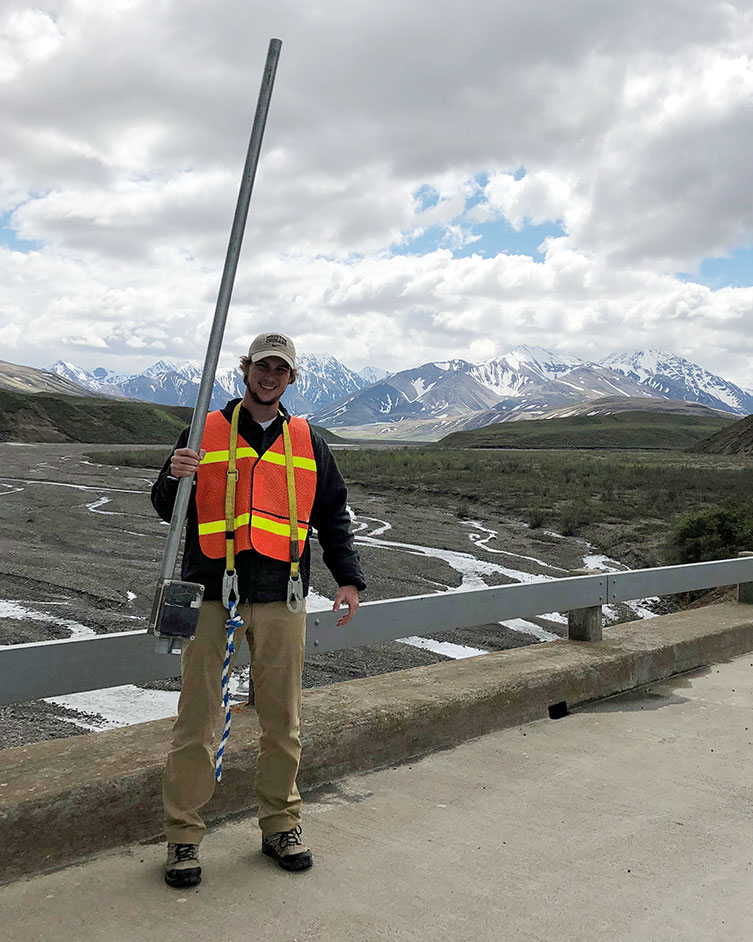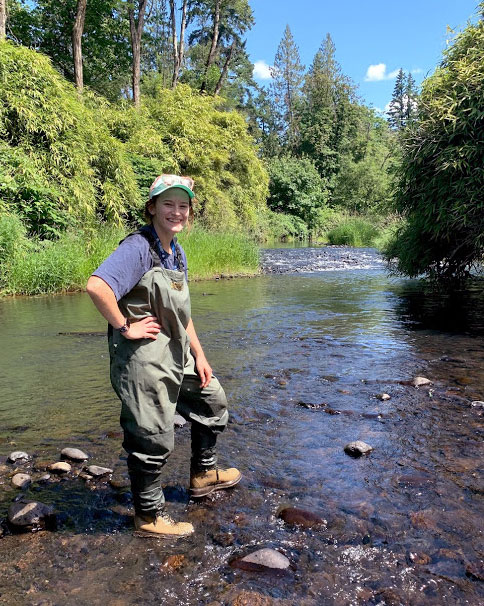Internship Experience Takes Them to Portland, Oregon, and Anchorage, Alaska
As recipients of Hollings Scholarships, University of Houston undergraduates Rachel Sanchez-Ruffra and Jacob ‘True’ Furrh spent their summer interning with the National Oceanic and Atmospheric Administration (NOAA).
For Furrh, an environmental sciences major, that meant working on a flood model for a neighborhood in Anchorage, Alaska. For Sanchez-Ruffra, a biology major, her internship project focused on the permit process for researchers studying endangered species.
The Hollings Scholarship
The Hollings Scholarship Program recognizes outstanding students studying in NOAA mission fields. In addition to two years of tuition support, Hollings Scholarship recipients spend the summer between the first and second year of their award interning at a NOAA office of their choice.
This internship, which runs for 10 weeks and comes with a stipend, offers hands-on, practical experience. Internship opportunities range from field research to science policy to science education.
Modeling Flood Maps in Alaska

Furrh’s work focused on modeling flood events for a neighborhood in Anchorage, Alaska, that is close to the confluence of the Chena and Tanana rivers. Due to this confluence, this neighborhood floods frequently, often before other neighborhoods are affected.
Given the limited data, these flood events are hard to predict.
“What you need is a good topography map of an area, which includes channel bathymetry information,” Furrh said. Bathymetry, sometimes called ‘submarine topography,’ is the measurement of the depth of water in oceans, seas or lakes.
“The problem is, we had really good topography data, but we didn’t have any channel bathymetry data, which meant channel depth was a complete unknown,” Furrh said.
In the absence of bathymetry data, Furrh took a backwards approach, which meant constructing inundation maps of recent floods using satellite imagery and historical data. He then used that information to predict channel depth, in order to come up with a better model.
“This internship fit into my overall goals,” Furrh said. “Flooding is one of my current interests.”
Permit Process for Research on Endangered Species

Sanchez-Ruffra’s internship took her to Portland, Oregon, where she interned at the West Coast Regional Office of NOAA’s Fishery. During her internship, she worked with an Endangered Species Specialist, focusing on how researchers obtain permits to conduct research on endangered species.
“I was interested in getting more experience on the policy side,” Sanchez-Ruffra said.
During the course of her internship, Sanchez-Ruffra interviewed a variety of employees about their recommendations for researchers needing to navigate the permit process. Her goal was to help clarify a process that can be confusing for many researchers.
This included preparing a report that detailed the process of obtaining permits.
“The questions I wanted to address were how do federal agencies get the data they need to determine a species’ status and how do researchers who aren’t federal employees navigate this process?” Sanchez-Ruffra said.
Final Research Presentation in Silver Springs, Maryland
After the conclusion of their internships, both Furrh and Sanchez-Ruffra traveled to Silver Springs, Maryland, to present their work. As part of their scholarships, they can also apply to attend up to two national scientific conferences during the fall.
- Rachel Fairbank, College of Natural Sciences and Mathematics